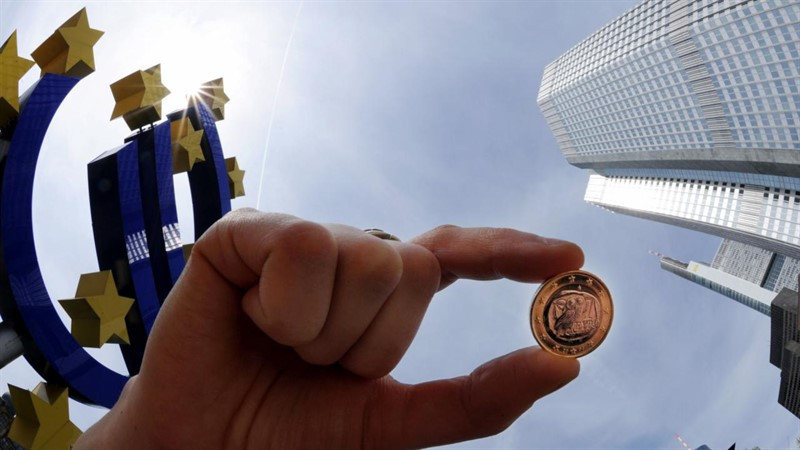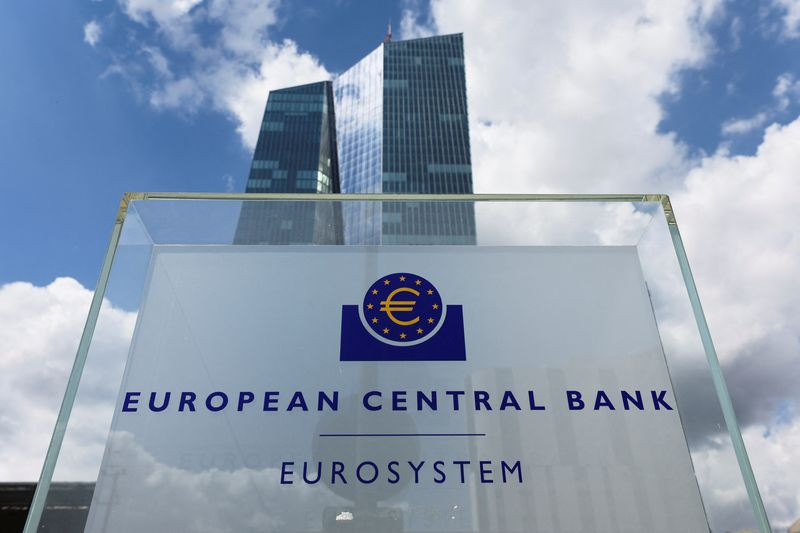
The greenback gained almost 13% in weight in 2022. For the first time in 20 years, the greenback overcame parity with the euro.
Most of the world's economies suffer from the expensive dollar, primarily energy importers.
The fact is that the prices of most commodities are denominated in the US currency.
That is, when we hear that gas in the EU has risen in price by some amount, it is worth bearing in mind that along with this, the euro has depreciated against the dollar.
Gas prices in the eurozone increased by more than 250% in 2022, and the single currency fell in price against the greenback by about 13%.
Relying on the almost complete energy independence of the United States and a relatively strong national economy, the greenback remains in demand.
According to data from the U.S. Commodity Futures Trading Commission (CFTC), published on Friday, the volume of the net long position in dollars was $14.21 billion for the week ended August 30, compared with $13.79 billion in the previous week.
Meanwhile, the deterioration of the European region's trade balance due to restrictions on Russian gas supplies and rising prices for "blue fuel" undermines the financial flows supporting the euro.
"The weakness of the euro is associated with the deterioration of the external accounts of the eurozone. This indicates that there are prerequisites for further depreciation of the single currency," HSBC strategists noted.
The energy shock is clouding the economic prospects of the eurozone, while the latest CFTC data suggests that speculators have increased their bearish rates on the single currency.
The base gas futures in northwestern Europe are still 10 times higher than their usual levels before the start of Russia's special operation in Ukraine and continue to trade at a crisis level for European industry.
Some energy-intensive industries in the eurozone, such as the production of fertilizers and aluminum, have already reduced output. Other industries already facing chip shortages and logistics challenges are also facing soaring fuel costs.
Brussels points out that Russia has turned energy supplies into weapons in retaliation for Western sanctions imposed against Moscow in connection with its special operation in Ukraine.
The Kremlin blames the same sanctions for provoking problems with gas supplies, which were caused by a malfunction of the Nord Stream-1 pipeline.
Until recently, the latter was the main transit route for Russian gas, which met about 40% of the EU's needs per year. However, before the shutdown last week, the pipeline was already operating at only 20% capacity.

Gas supplies via Nord Stream-1 were supposed to resume on Saturday, September 3, but Russia canceled this deadline, citing an oil leak in the turbine, and did not name specific dates for resuming supplies.
Although observers in different countries admitted the possibility of such a development, the reaction of the markets to this news turned out to be quite emotional.
Gas prices in Europe jumped by almost 35% on Monday, approaching $2,900 per 1,000 cubic meters.
The euro fell to $0.9876, the lowest level since 2002, before recovering to $0.9940, but closed in negative territory, dropping 0.2% at the end of yesterday's session.
"The situation in the eurozone is changing. A few months ago, they said something like this: "there will be no recession." Recently, the story changed to: "there will be a recession, but not deep." This weekend we saw the latest shift: "we are moving towards a deep recession," analysts from the Institute of International Finance said.
Some support for the euro was provided by the fact that EU countries filled their underground gas storage facilities ahead of schedule by an average of 80%.
In addition, over the past few European states have announced plans to overcome the crisis of the cost of living and a sharp rise in energy prices.
Thus, the German authorities, reacting to the situation, decided to allocate about €65 billion to support consumers and businesses.
The German government has spent €300 billion to help the national economy over the past two years of the coronavirus pandemic.
Another package of support measures adopted in response to the acceleration of inflation after the outbreak of hostilities in Ukraine in February reached €95 billion euros.
"The third aid package is unlikely to change the fact that Germany is likely to fall into recession in the autumn. At least the next aid package cannot change the fact that Germany, a net importer of energy resources, has become poorer. Companies have to reduce energy consumption, which has become expensive, and also reduce their production in accordance with this," Commerzbank strategists noted.

According to Klaus Mueller, head of the German Federal Network Agency, even with 95% natural gas storages filled, the country's blue fuel will last for a couple of months at most, if supplies from Russia do not resume.
Will Germany be able to make up for the shortage of natural gas, analysts at Commerzbank wonder.
"Under the best scenario (80 terawatt-hour gas shortage) and a mild winter, the supply can be practically secured through conservation and withdrawal of reserves, even without the resumption of Russian supplies. A 245 terawatt-hour gas shortage will require savings of 195 terawatt-hours over the next 12 months. Although extremely high prices create a significant incentive to save, this does not seem achievable. In this case, the introduction of the norm is probably inevitable. Also in this case, the recession that we already expect will be much more serious," they said.
"Although the eurozone has made notable progress in accumulating gas reserves for the upcoming winter, this has occurred due to a significant weakening of demand caused by a reduction in production, and does not completely eliminate the risk of a more serious failure in winter," Goldman Sachs analysts said.
According to the bank's forecast, the euro will fall to $0.97 and remain at this level for the next six months, as the decline in demand caused by the gas crisis will lead to a deeper and longer decline.
"Gas supplies have declined even more than expected, and we are already seeing evidence of a decline in demand affecting business activity," Goldman Sachs analysts said.
"Now we expect the euro to fall even below parity (to $0.97) and remain at this level for the next six months," they added.
The reduction in activity in the eurozone services sector in August, along with weak data on activity in the industrial sector and record inflation of 9.1%, significantly increased the likelihood of a prolonged economic downturn in the region.
ING economists expect that the main currency pair will remain under pressure, and believe that the single currency may fall to the support zone of $0.9600-0.9650.
"The energy crisis will keep EUR/USD in check for now. The support at 0.9900 seems quite fragile and was briefly broken yesterday. We can consider the 0.9850 or 0.9800 marks as the next key levels, although the deterioration of the macroeconomic picture in Europe means that a further fall to the support area of 0.9600-0.9650 cannot be ruled out," they said.
On Tuesday, the euro tried to extend the rebound of the previous day and even reached a local high around $0.9985.
Some relief for the single currency was brought by the news that gas prices in Europe moved to a decline after a sharp increase the day before.
In addition, the Financial Times newspaper reported that the European Commission has developed several options for limiting prices for Russian gas, with which it expects to cope with the energy crisis.

The heads of the energy ministries of the EU member states will meet on September 9 to discuss urgent measures across the bloc in response to the sharp rise in gas and electricity prices, which is hitting European industry and increasing household bills after Russia restricted gas supplies to the bloc.
"Governments are working on setting a price ceiling, consumer support measures and really trying to take control of the energy crisis, which should help the EUR/USD pair form a bottom," Lombard Odier strategists noted.
The main currency pair quickly lost its bullish momentum after it rose to parity.
By the opening of trading in New York, it plunged by more than 100 points and updated a twenty-year low in the area of 0.9870, before returning to the zone just above 0.9900.
The initial positive mood was replaced by fears that the introduction of a ceiling on gas prices could lead to an even greater escalation of geopolitical tensions.
Moscow's possible response to such a restriction may be a complete cessation of gas supplies to countries that will comply with such a ceiling.
The fact that in July production orders in Germany fell by 1.1% month-on-month and by 13.6% year-on-year, which is much worse than expected and confirms the economic failures of the currency bloc, did not add to the optimism of the euro.
Meanwhile, the Institute for Supply Management reported that its index of business activity in the US non-manufacturing sector rose to 56.9 points last month from 56.7 points in July, which was the second monthly consecutive rise after three months of decline.
The rise in services followed last week's ISM manufacturing survey, which showed that manufacturing activity in America grew steadily in August in contrast to other major economies.
It is assumed that reliable statistical data will give the US monetary authorities more leeway to take control of inflation, which is at a 40-year high.
The futures market estimates a 75% chance that the Fed will raise rates by 75 basis points at its September policy meeting. Such expectations support the US currency.
Meanwhile, the euro is still trading below parity with the dollar, even despite the growing chances that the European Central Bank will raise the rate by 75 basis points at the next meeting.

Money market quotes reflect an 80% probability of an ECB rate hike by 75 basis points this week, but analysts believe that this will do little to help the single currency.
A major rate hike seems to have already been largely taken into account in the euro exchange rate, and the question of how far the ECB can go in its tightening policy is debatable if the energy crisis seriously undermines the economic growth of the region.
"Even a significant increase in ECB rates will not save the euro. There is a recession ahead, and geopolitical problems are beyond control," Barings analysts said.
The ECB is likely to raise interest rates by 75 bps, but for traders, ultimately, what happens in the European gas market is more important, Societe Generale believes.
"The current conditions do point to a stronger ECB rate hike so far. However, in the medium term, there is a risk that the central bank will quickly question its tightening measures as soon as economic problems intensify," Commerzbank analysts said.
"The ECB will have to justify the hopes placed on it this week so that the EUR/USD pair continues to hold near parity. In addition to the scale of the interest rate hike, it will probably be important whether the central bank will signal that it will adhere to an aggressive rate hike rate even taking into account current economic risks. For any fluctuations, the market is likely to quickly punish the central bank by weakening the euro," they added.
The inability to demonstrate a confident upward trend leaves the EUR/USD pair vulnerable to further pullback in the near term.
A breakthrough below 0.9870 will bring the 0.9830 and 0.9790 marks into play.
On the other hand, the nearest resistance is at 0.9950, followed by 1.0000 and 1.0050.





















